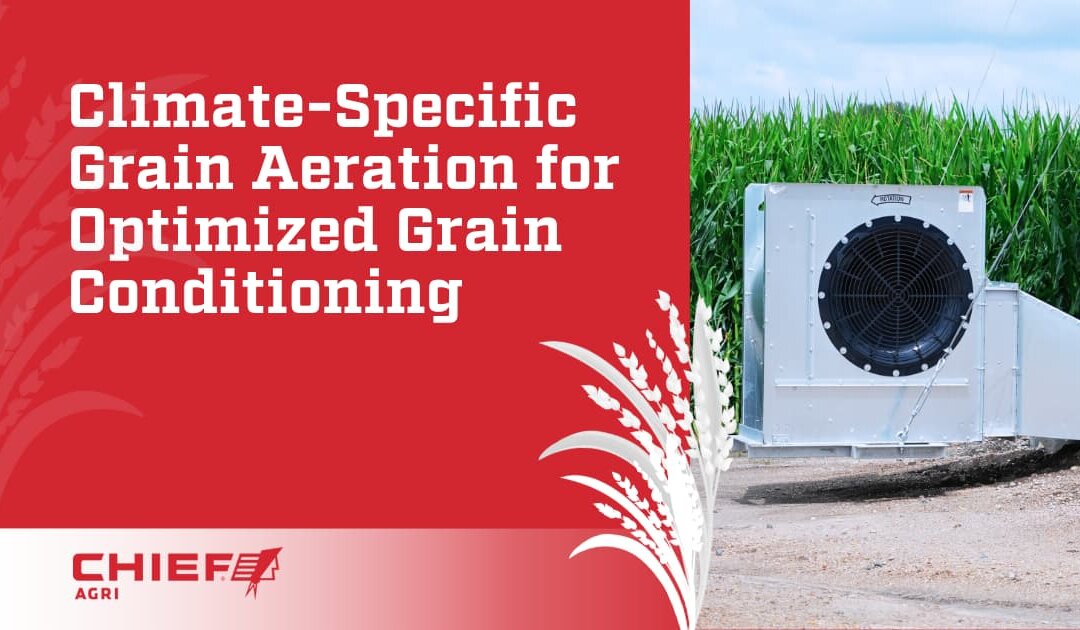Chief Agri’s Guide to Grain Aeration Systems for Your Climate
Dealing with spoiled grain is a nightmare for any producer—the time and money invested in your harvest shouldn’t be lost to mold or pests, yet this is a common and frustrating reality. The secret to protecting your hard work isn’t just running your fans; it’s understanding that effective grain aeration isn’t a one-size-fits-all solution. Your local climate, whether hot and humid or cold and dry, plays a critical role in developing a successful grain conditioning strategy.
Chief Agri is a trusted leader in grain storage solutions, and we understand the challenges you face. This guide will help you navigate the complexities of grain aeration systems by providing expert advice on how to customize your system for your specific region. We’ll show you how to protect your grain, optimize your storage, and ultimately, preserve the value of your entire crop.
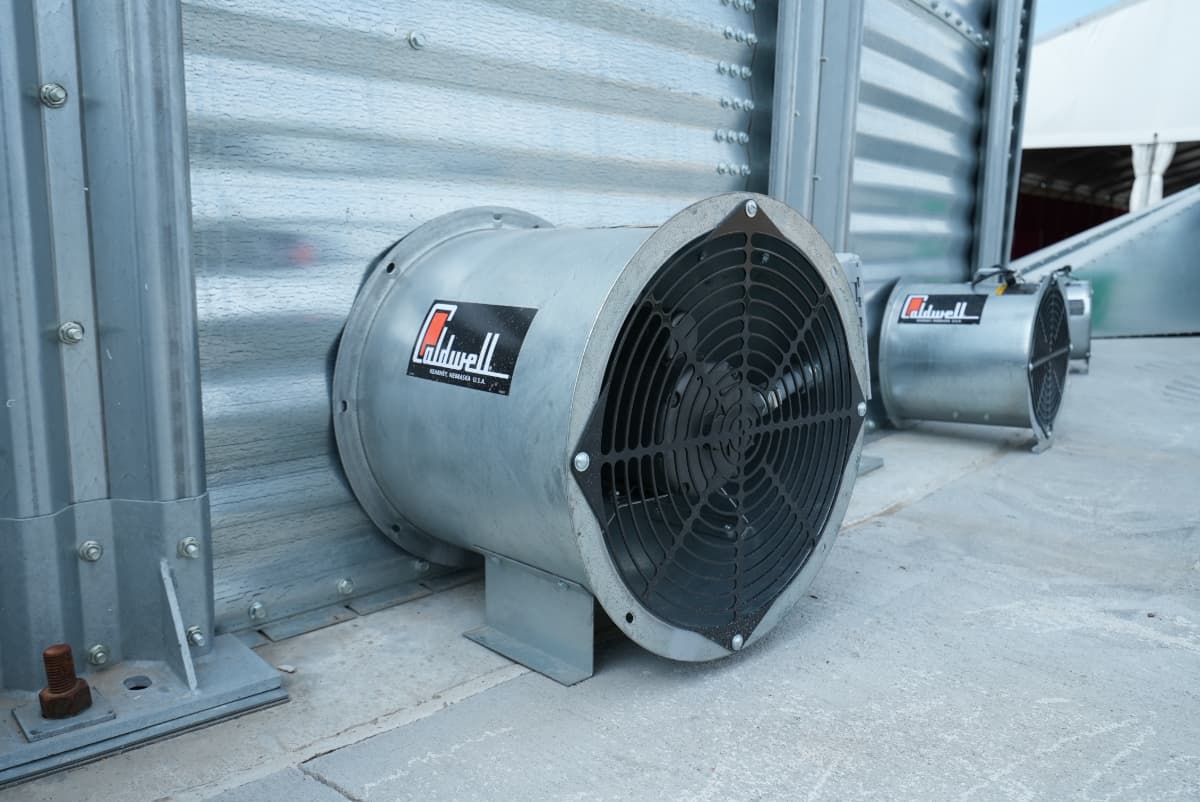
The Foundation of Grain Aeration: Why It Matters
Grain aeration is the process of forcing air through stored grain, and it’s a crucial step in preserving the value of your crop after harvest. The primary goals of this process are to:
- Cool the grain
- Equalize its temperature
- Maintain its overall quality
Aeration vs. Drying: Clarifying the Difference
While often used interchangeably, grain aeration and grain drying are two distinct processes. Grain drying involves removing moisture from the grain to bring it to a safe storage level. This usually requires fans, and sometimes supplemental heat, to push air through the grain until the moisture content is reduced.
Grain aeration is different. Its main purpose is to maintain the quality of the grain once it has been dried. It uses fans to move a small amount of ambient air through the grain mass. This air movement helps to cool the grain and prevent moisture migration, which is the movement of moisture within the bin.
The Main Enemies of Stored Grain
Understanding the threats to your stored grain is the first step in creating an effective grain bin ventilation plan.
Moisture Migration
This is a major issue caused by temperature differences within the grain bin. As the temperature of the grain changes, moisture can move from warmer areas to cooler areas. This can lead to condensation, crusting, and spoilage, especially in the top layers of the bin.
Mold and Insects
A well-aerated bin is a hostile environment for mold and insects. Temperature control is the key here. Keeping the grain at a consistent, low temperature prevents the conditions that allow mold to grow and insects to thrive. Failure to do so can result in significant financial losses.

Tailoring Your Aeration Strategy to Your Climate
Your local climate dictates the best approach to grain aeration. What works in a dry, arid region will not be effective in a humid, coastal area. Let’s explore how to optimize your system for different climate types.
Humid Climates
In humid climates, cooling your grain without introducing more moisture into the bin can be a major challenge. The high moisture content in the air can cause condensation and spoilage, especially if you run your fans at the wrong time.
- The Solution: The best practice is to operate your fans during the coolest and driest periods, which are often at night. This ensures that you are moving cooler, drier air through the grain, rather than warm, moist air.
- Fan Operation: An automated fan controller is an invaluable tool in humid climates. It can be set to run your fans only when the temperature and relative humidity are within ideal parameters for effective grain conditioning. This prevents you from inadvertently adding moisture back into your grain.
Cold Climates
In cold climates, particularly cold-humid climates, the main enemy is moisture migration. As the grain in the bin’s core remains warm and the outside layers cool, moisture can move from the center to the colder edges. This leads to condensation, crusting, and even freezing.
- The Solution: The key is to cool the entire grain mass evenly. You want to bring the temperature of the grain down to a uniform, safe storage level. This prevents the temperature differentials that cause moisture migration.
- Target Temperatures: The ideal target temperature for winter storage is around 30 to 40 degrees Fahrenheit (-1 to 4 degrees Celsius). Achieving this requires carefully managed fan operation. It’s important not to over-cool the grain, as this can lead to other issues.
- The “Spring Warm-Up”: Just as important as cooling the grain for winter is re-aerating it in the spring. Before the summer heat arrives, you need to raise the grain temperature slowly. This helps prevent spoilage and crusting that can occur as the bin warms up unevenly.
A cold-dry climate has the best natural conditions for grain storage. The absence of high humidity means there’s less risk of moisture buildup, making grain drying less of a concern. The primary challenge is to manage the grain’s temperature to prevent insect activity and spoilage.
- The Solution: The main strategy for grain aeration is to cool the grain to a point where insect activity is minimized, typically below 60 degrees Fahrenheit (15.5 degrees Celsius).
- Run Fans Strategically: To achieve this, you run fans when the outside air is significantly cooler than the grain.
Dry Climates
Dry climates typically have less humidity to worry about, but they can still pose a challenge. High daytime temperatures can lead to insect activity and spoilage.
- The Solution: The main strategy here is to focus on cooling the grain to a safe storage temperature as quickly and efficiently as possible. In dry climates, you often have a wider window of opportunity for effective aeration, as the air itself is less of a moisture risk.
- Strategies: Run fans when the air temperature is significantly cooler than the grain temperature. The goal is to cool the grain to a point where insect activity is minimized, typically below 60 degrees Fahrenheit. This minimizes the need for supplemental moisture control and makes grain drying less of a concern.
RELATED: Moisture Management Strategies for Commercial Grain Storage
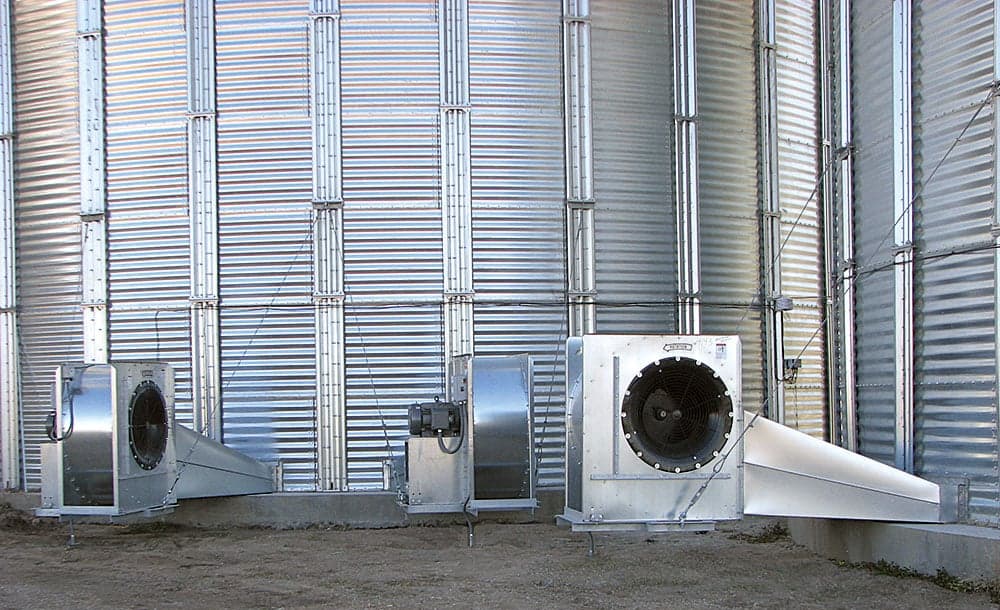
Building Your Optimal Grain Aeration System
To achieve these climate-specific goals, you need the right tools. A well-designed grain aeration system is the backbone of successful grain conditioning.
Key Components of a System
An effective grain aeration system consists of three main components:
- Fans: These are the heart of the system, forcing air into the bin.
- Vents: These allow the moist or warm air to exit the bin.
- Air Ducts: These distribute the airflow evenly throughout the grain mass.
Choosing the Right Fans
This is one of the most critical decisions. The performance of your fan is measured in CFM (Cubic Feet per Minute) per Bushel. This is the volume of air the fan moves for every bushel of grain in your bin.
Fan Types
Choosing the right fan depends on the static pressure of your system and the depth of your grain. Here are the primary types and their ideal applications:
- Axial Fans: These fans are designed for high-performance aeration systems with low static pressure and shallow grain depths–they’re great for pushing air through large amounts of grain..
- Centrifugal Fans: These are designed for high-performance aeration systems with medium static pressures and deeper grain depths–these are ideal for grain with high resistance to airflow, like fine seeds.
- Inline Centrifugal Fans: These fans are designed for aeration systems with medium to high static pressures and deeper grain depths, as you’d find in tall silos or bins with deep columns of grain.
Aeration Ducts and Floors
The way air is distributed is just as important as the fan itself. Uniform air distribution is crucial for success. If the air isn’t reaching all the grain, you’ll still have spoilage problems, no matter how powerful your fan is.
- Perforated Floors: Full perforated floors offer the best and most uniform air distribution.
- Ducts and Spears: These are a more economical option, but they can create uneven airflow, leading to hot spots.
Fan Controls
Automated fan control systems are a game-changer for grain aeration because they use sensors to monitor temperature and humidity, running fans only when conditions are ideal. This technology removes the guesswork from the process and ensures your aeration is always efficient.
Bin Design and Maintenance
A well-designed bin with proper vents and sealed floors will drastically improve airflow and system effectiveness. Regularly cleaning the floors and ensuring all vents are functioning properly are simple steps that can make a huge difference in preserving your grain stores.
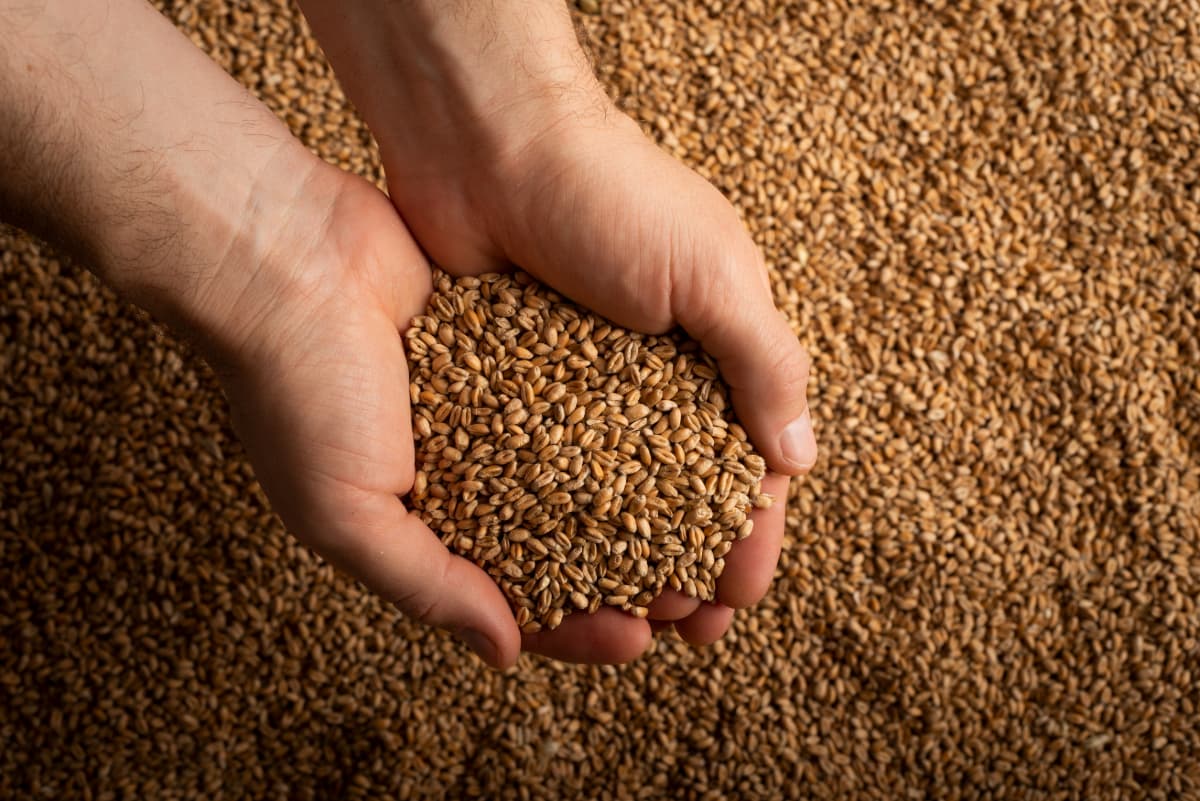
Beyond the Bin: Other Factors for Optimal Grain Conditioning
Your grain aeration system is only part of the solution. Other factors also play a critical role in preserving your harvest.
- Grain Preparation: Before you even put your grain in the bin, clean it to remove any foreign material. This includes chaff, dust, and broken kernels, which can block airflow and create hot spots.
- Monitoring: Using temperature cables and moisture sensors allows you to spot problems early. By monitoring conditions within the bin, you can adjust your aeration strategy before spoilage begins.
- Maintenance: A simple checklist can prevent issues with your aeration system. Regularly inspect fans, ducts, and vents to ensure they are clean and in good working order.
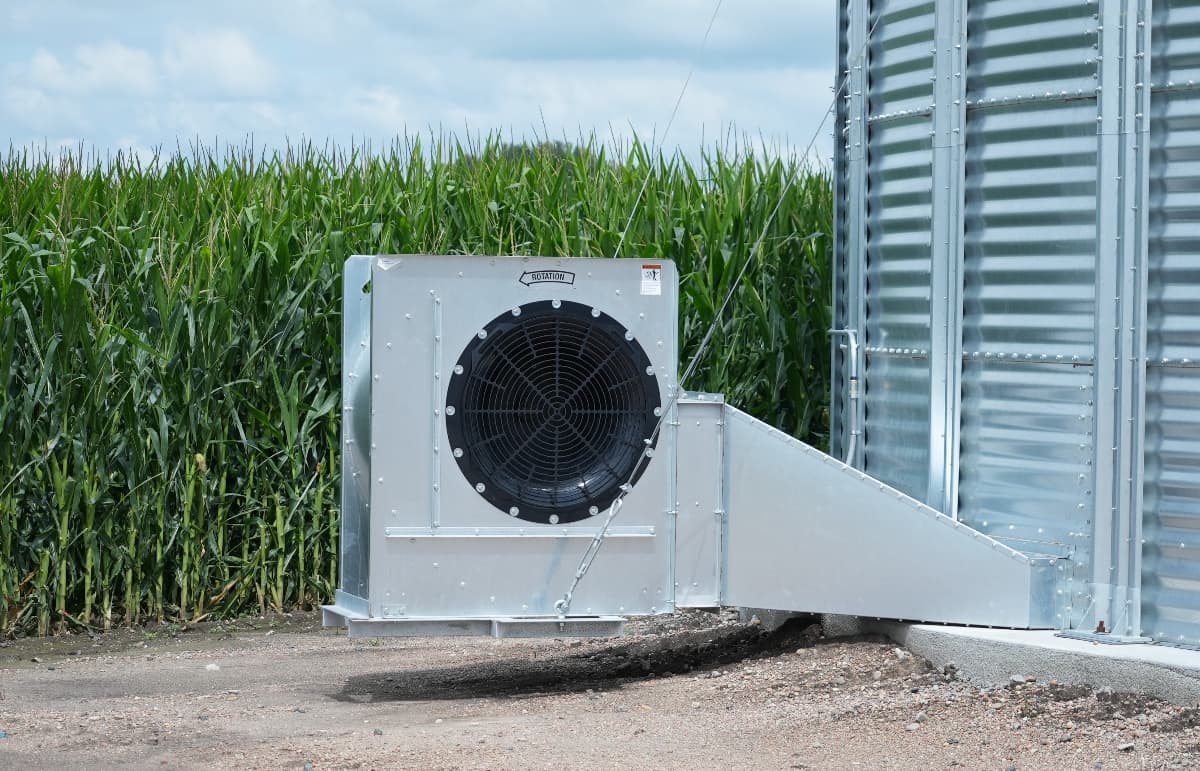
Your Plan for Smart Grain Bin Ventilation
A localized approach to grain conditioning is an investment in the long-term quality and value of your grain. By understanding the principles of grain aeration and tailoring your strategy to your specific climate, you can significantly reduce spoilage and protect your profits.
Chief Agri provides reliable, high-quality grain storage and grain conditioning products that producers and grain dealers can trust. We have the expertise to help you evaluate your current aeration systems and consider what changes you can make to better suit your local climate.
Contact our sales team today to ensure your harvest is preserved for the future.

